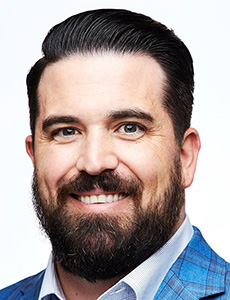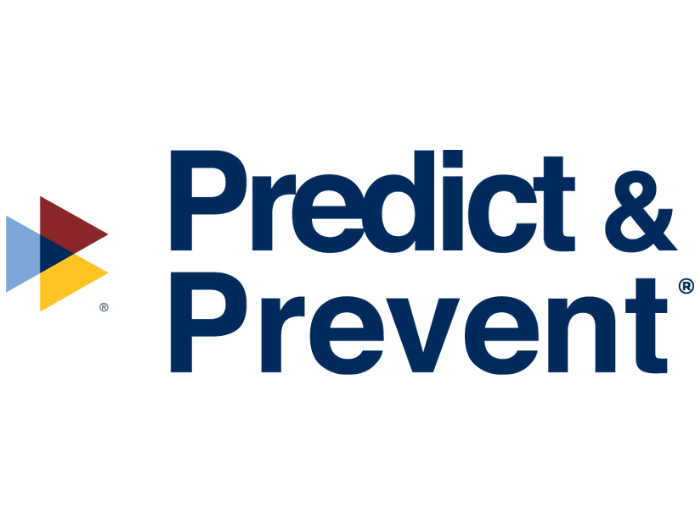Public Sector Workers Deserve Better Protection. Here’s How Insurers Can Help

A West Texas school board recently received death threats from a person angry about certain books in school libraries, which they deemed “porn and other degenerate filth.”
“I will kill you,” stated an email received by Midland Independent School District board members on March 22, according to the Midland Reporter-Telegram.
The incident reflects the sort of threats that public sector employees are facing in a wide range of settings: in schools, government offices, hospitals, courthouses and libraries, or on the street as letter carriers. Threats and violence against public officials and other public servants and employees are on the rise, according to various sources — a disturbing trend with a negative impact on employees who face ongoing challenges, including greater risk of depression or anxiety and PTSD and detrimental effects on their overall physical and mental health that may cause them to require treatment and time off from work.
Violence By the Numbers
The U.S. Postal Service alone reports that robberies of letter carriers have soared in the past few years — 412 letter carriers were robbed in 2022, compared to 305 incidents reported in the first half of fiscal year 2023.
Also in 2023, there were 38 school shootings in the U.S. that resulted in injuries or death, according to an analysis by Education Week.
Looking at threats against public officials, researchers at the National Counterterrorism Innovation, Technology, and Education Center (NCITE) at the University of Nebraska Omaha reviewed the years from 2013 to 2023 and found 501 federally investigated threats that resulted in convictions. They were mostly made against members of the criminal justice system, from law enforcement to judges, followed by elected officials and those who run and manage elections.
Educators and health care workers also received threats.
The costs of workplace violence are staggering, according to the National Institute of Occupational Safety and Health, which reports that workplace violence as a whole costs employers more than $120 billion annually in claims, litigation, additional security, staffing, communications and other expenses. And the costs don’t end there. A U.S. Department of Justice study found that almost 75% of victims reported some level of emotional distress following
Professional Agitators
While a tension-filled political environment in an election year is one source of threats and violence, Marcus Henthorn, managing director of Gallagher’s public sector and K-12 education practice, sees the rise in social media and influencers as another trend that is bringing conflict into public sector workplaces.
He cites First Amendment auditors, as they are known, as a large issue facing Gallagher clients. Auditors typically travel to places considered public property (such as police stations, city halls or post offices), where they photograph or video record buildings or persons with the intention of posting the results on social media.
“They are doing it for a variety of reasons,” Henthorn said. “Many are looking to exercise their First Amendment right to video record in public spaces, others are looking to monetize it for clicks — some simply want a reaction.”
These audits can give rise to scuffles or other unpleasant interactions. In 2021, four police officers in New London, Connecticut, were disciplined after they interacted with an auditor. In 2022, a police officer in Danbury, Connecticut, received an eight-day suspension and mandatory retraining after he attempted to force an auditor to leave a police station parking lot.
Henthorn said public entities need to be better aware of how to de-escalate a potentially violent incident, no matter what the source.
“I think our goal is to help them delineate between what is potentially a mental health issue and a professional agitator in another situation,” he said. “They need to try to identify what the root causes are for each specific situation and learn how to better prepare and mitigate for those in the future.”
Henthorn said policies, training and building bonds with the greater community need to be implemented to prevent such incidents from happening or from escalating.
“Policies, procedures, education, training,” he said. “At least just have that framework in place — a lot of organizations don’t even have that.” Professional agitators will move on to their next target if they don’t get a video-worthy reaction from officials, he said. “Will they go on to the next place? Yes,” he said. “I mean, would you try to rob a jewelry store that’s got an alarm and all the security systems? Or would you go to the door that’s unlocked?”
Addressing Shootings
While First Amendment audits have gotten some public employees who respond to them in trouble, school shootings continue to be a threat to teachers and students in the public sector and private sector alike.
Austin Shadle, commercial lines strategic account executive for HUB International, said that what items will be covered in the aftermath of a shooting is not well defined.
“While your traditional insurance programs typically include some coverage for workplace violence, there is considerable ambiguity regarding these types of claims,” he said. “Due to the relatively recent nature of these tragedies, there is limited case study data, and key education markets are hesitant to definitively state what would or would not be covered.”
He said some coverage can be expected under several policies: general liability for third-party lawsuits (for such items as negligence or mental anguish); workplace violence endorsements that offer first party coverage for such expenses as counseling, AD&D and medical cost; workers’ comp for injured or deceased employees who would be eligible for benefits such medical, disability, death benefits and funeral expenses; and property insurance, which may respond under the business interruption and extra expense form.
“While active shooter events are not a covered cause of loss, vandalism is, and damage to the building could trigger policy,” he said.
Active shooter insurance is another potential source of coverage.
“We suggest every institution at least explore this option,” he said. “Like all insurance, it can be hard to justify purchasing it until you find yourself in a situation where you need it. Active shooter or deadly weapons protection policies serve as a gap-filler to complement the shortfalls of your traditional insurance program. Having more funds available to support those in need during unfathomable times is preferable.”
Pricing varies based on the size of the institution, but typically the cost is $8,000 to $10,000 for a $1 million limit, he said.
Preventing and Recovering from a Shooting
Morgan Shrubb, head of terrorism, North America for AXA XL Americas, said her company has recently launched a product that enables clients who have purchased an active assailant policy to access a range of products included within the policy and others available at discounted prices to help them prevent or recover from a violent incident.
The product was offered because “we felt that the traditional insurance policy, basically paying a claim after a mass shooting, wasn’t doing enough,” she said. “We felt we were positioned to add value beyond the policy, and we are able to create a holistic, solutionbased product.”
Such services are provided for both pre- and post-event. One of AXA XL’s partners is a security company that can assess the level of a threat.
“If a client receives a threat, they can call our security firm and, if it is deemed appropriate, they will either hop on a plane and fly out to work face-to-face or work remotely with law enforcement and advise the client on risk mitigation strategies that will hopefully stop a threat from coming to fruition, and potentially stop an attack from ever happening,” Shrubb said.
Another partner company provides a whiteboard that can be converted into a room that locks from the inside and provides a safe place to shelter during a shooting incident. And another partner is a therapy/ counseling company that can work with victims after a shooting.
“We extend the counseling to immediate family members as well,” she said. “So that means children, their siblings, parents and grandparents can all access these counseling services. It really focuses on making the human whole again after they experience a terrible incident like a mass shooting.”
Shrubb said the types of clients seeking this insurance cover a wide range, including the public sector.
“They are places wherever there is public exposure — shopping malls, retail, restaurant, hotels, offices, municipalities, airports, even apartment complexes. It’s literally everything under the sun.”
The cost of the policy depends on exposure, but ranges from $5,000 for a $1 million limit on the low end to hundreds of thousands of dollars for policies with higher limits, she said. Unfortunately, she added, given the rise in violence, “there is massive demand for it” — whether clients are in the public or private sector. &












